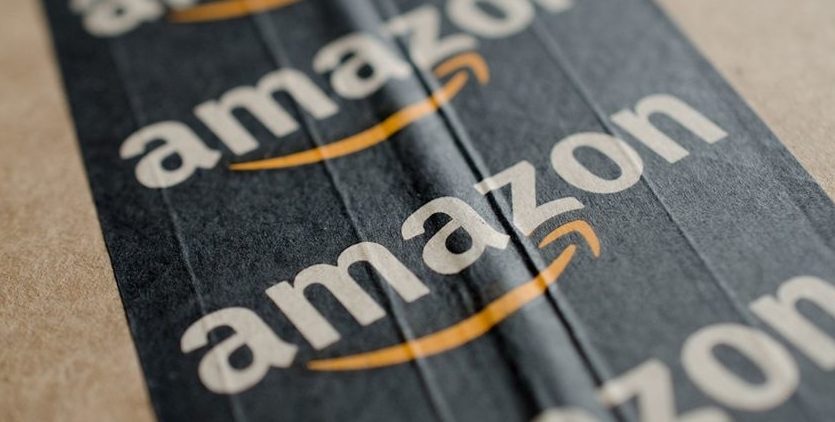M+E Connections

Amazon CFO: Company to Continue AWS, Alexa, Streaming Video Investments
Story Highlights
Amazon will continue to make major investments in its Amazon Web Services (AWS), Alexa and streaming video businesses after continuing to make strides on each of them in the fourth quarter (ended Dec. 31), according to CFO Brian Olsavsky.
The company surpassed a $20 billion annual run rate in “top-line revenue” for AWS in the fourth quarter, up from $18 billion in the prior quarter, he said Feb. 1 on an earnings call with analysts. “We’re very happy with both the progression in new services and features that we’ve been able to bring to customers and also their response,” he said, adding: “We’ll continue geographic expansion and continuing to again build on our tech teams and our sales teams. So, that expense is going to continue and likely increase.”
AWS revenue grew to $5.1 billion in Q4 from $3.5 billion a year earlier, while AWS operating income increased to $1.4 billion from $926 million. AWS added several enterprise customers in the quarter, including Expedia, while Disney and Turner each named AWS as its preferred public cloud provider and the National Football League (NFL) and Capital One each chose AWS for machine learning and artificial intelligence (AI), Amazon noted in its earnings news release.
Also on the AI front, AWS introduced four services that allow developers to build applications that emulate human-like cognition: Amazon Transcribe for converting speech to text. Amazon Translate for translating text between languages, Amazon Comprehend for understanding relationships and finding insights within text, and Amazon Rekognition Video, a deep-learning powered video analysis service that Amazon said “tracks people, detects activities, and recognizes objects, celebrities, and inappropriate content.”
AWS continued to expand its infrastructure in 2017 to better serve customers, launching a new region in France and a second AWS region in China during Q4, Amazon said. AWS plans to open 12 more Availability Zones across four regions (Bahrain, Hong Kong, Sweden and a second GovCloud Region in the U.S.) between now and early 2019, it said, pointing out AWS now operates 52 Availability Zones across 18 infrastructure regions globally.
AWS also “continues to accelerate its pace of innovation with the release of 497 significant new services and features” in Q4, boosting the total number of launches in 2017 to 1,430, Amazon said.
Amazon was also “very happy with the results” for its devices that use the AI-powered Alexa Voice Service, Olsavsky said on the call. There were “record device sales” in the quarter, along with “very high levels of customer engagement, including increased levels of voice shopping, growth in functionality, growth in our partners we work with [and] skills that we’ve increased rapidly,” he said, noting there are now more than 30,000 skills for Alexa. There are also now “4,000-plus smart home devices from 1,200 unique brands” that are compatible with Alexa from multiple companies, he said, “so, the relationships we’re having with external companies [are] actually helping to accelerate the adoption of Alexa with customers.”
Amazon’s 2017 projections for Alexa were “very optimistic, and we far exceeded them,” Amazon CEO Jeff Bezos said in the earnings release. “We don’t see positive surprises of this magnitude very often — expect us to double down,” he said, adding: “We’ve reached an important point where other companies and developers are accelerating adoption of Alexa.” For example, Amazon is “seeing strong response to our new far-field voice kit for manufacturers,” he said, adding there’s “much more to come.”
In addition to the Echo family of Amazon devices that are all “directly tied to Alexa,” Olsavsky noted that Amazon’s Fire TV Sticks and tablets also use Alexa, and “we’re seeing more and more engagement” on all those devices, he said. Alexa usage on Fire TV, for example, was “up 9x year-over-year” in Q4, he told analysts. Music listening time on Alexa was also “3x higher this holiday season,: he said, adding Amazon will “continue to invest heavily” on Alexa.
As usual, Amazon didn’t specify how many Alexa devices were sold in the quarter, saying only that “customers purchased tens of millions of Echo devices last year” and Echo Dot and the Fire TV Stick were the “best-selling products in 2017 across all of Amazon.”
In streaming video, “we do like the results we’re seeing with engagement [by] customers, their buying habits, their engagement with the video content” and also “their use of it on devices,” Olsavsky said. Amazon “will continue to increase our budget in that area,” he said.
Amazon Prime membership, meanwhile, “continues to be an important business driver for the company,” Wedbush Securities analyst Michael Pachter said Feb. 2 in a research note. Amazon added more new Prime paid members in 2017 (globally and in the U.S.) “than in any other year in company history, highlighting the positive momentum of the service,” he said, adding that the company’s 2017 subscription services revenue of $9.72 billion “implies that Amazon may be approaching 100 million” Prime subscribers worldwide. In comparison, streaming rival Netflix ended 2017 with aboout 118 million subscribers globally, including about 111 million paid subscribers, he said. Amazon Prime membership includes a Prime Video streaming subscription.
“Given the momentum in Prime penetration,” as well as the Alexa/Echo growth and cloud services, Amazon’s “competitive moat continues to widen,” Baird Equity Research analyst Colin Sebastian said in a research note Feb. 1. “While heavy spending likely persists through at least 2019” on those initiatives, he said, Amazon’s “building a technology-centric platform with significant runway for further growth.”
Total Amazon revenue grew 38% in Q4, to $60.5 billion, while profit jumped to $1.9 billion ($3.75 a share) from $749 million ($1.54 a share). Amazon shares were trading more than 5% higher at $1,467 the afternoon of Feb. 2.









